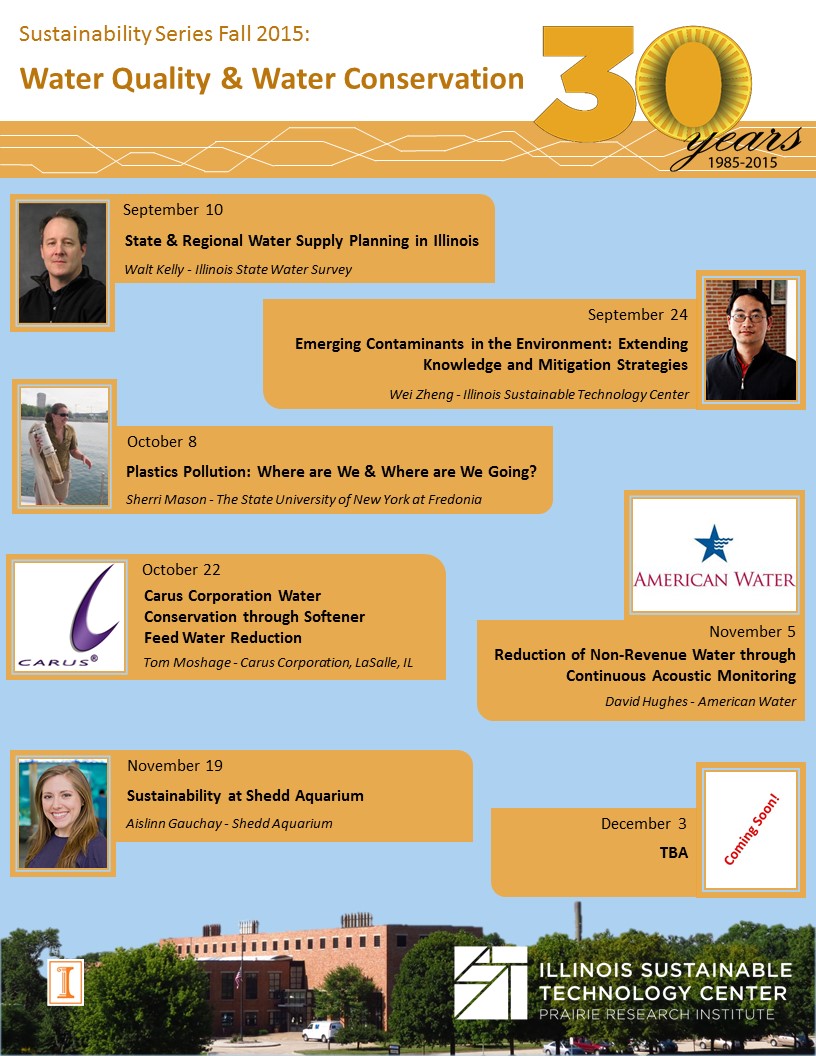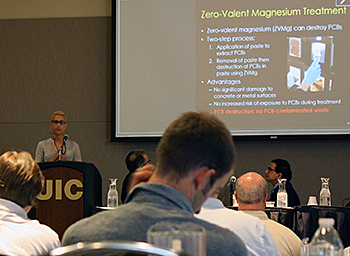 Videos of presentations at ISTC’s anniversary event provide a fascinating look at problems of pollution contamination in Illinois and how the Center contributed to the clean up. Links to the videos will be made available over the next two weeks as they become available.
Videos of presentations at ISTC’s anniversary event provide a fascinating look at problems of pollution contamination in Illinois and how the Center contributed to the clean up. Links to the videos will be made available over the next two weeks as they become available.
ISTC Looks Back, and to the Future During Anniversary
VIDEO 8: Jerri-Anne Garl represented the federal Environmental Protection Agency during the ISTC Anniversary Celebration. Since EPA’s pollution prevention program started in the early 1990s, ISTC “has been one of our most effective and innovative partners,” Garl said. “ISTC itself has served as a model for other state programs.” She outlined successes of ISTC programs in assisting local communities and small companies, as well as major manufacturers, save money, water, energy, and make their operations more environmentally friendly.
Garl reviewed federal priorities for the EPA: 1) making a visible difference in communities; addressing climate change and improving air quality; launching a new era of state, tribal and local partnerships; and embracing EPA as a high performing organization. She added that the agency has set three emphasis areas for its work: climate change, food manufacturing, and hazardous materials mitigation.
“We believe that the ISTC is really well-positioned with the tools, experience, connections and the innovative spirit, to be a central partner in this effort.
NEXT UP: Scott Bennett, Illinois Senate (52 Dist. D), “Protecting Our Environment.”










